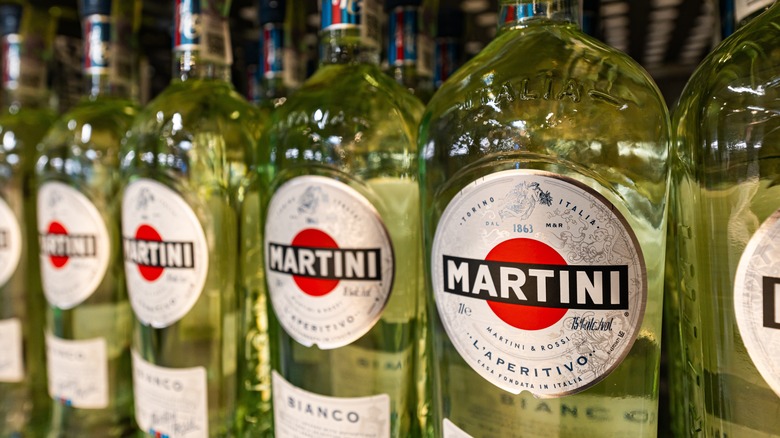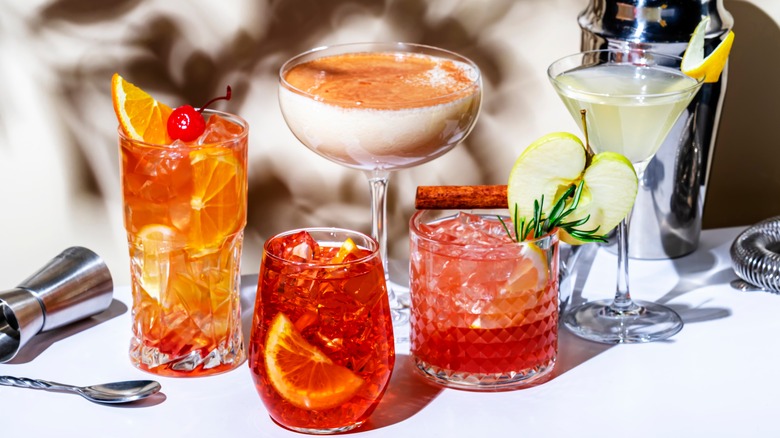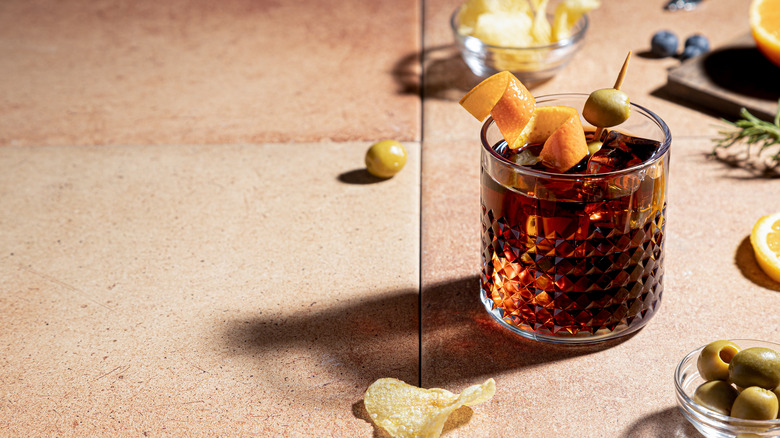What Is Vermouth Actually Made Of?
Even if you think you're unfamiliar with it, you've likely seen vermouth at a bar, at your friend's house, or even tucked away in your own liquor cabinet. The aromatized, fortified wine is traditionally dry or sweet and made in Italy, although there are now makers in France, the United States, and several other countries. There's even a slightly spiced, citrusy, and sweetly balanced Spanish variety of vermouth. No matter where it comes from, it's a versatile staple even a novice barkeep should have in their arsenal.
From martinis, negronis, and Manhattans to solo sipping, vermouth helps the world of alcoholic beverages go 'round. What makes the wine so unique is its complex body that can combine botanicals, herbs, citrus fruits, and spices. Elements might include wormwood, sage, chamomile, juniper, star anise, citruses, and so much more. While often kept on a bar cart or in a liquor cabinet, vermouth is not a spirit. That said, the drink is fortified with a small amount of spirit alcohol, making its ABV often stronger than most regular wines.
Different varieties and different uses
There's a lot more to vermouth than dry whites and sweet reds. Subcategories include amber, rosé, sweet whites, blancs, and more. Different options vary in their amounts of floral, sweet, spicy, herbaceous, and bitter notes. How vermouth tastes depends on the type and where it's from. Sweeter options are created with caramelized sugar, adding to the depth of flavor you'll taste in a negroni or Manhattan.
Drier options are often lightly floral, tart from citrus fruits, and crisp. The botanicals in these pair well with the boldness of vodka or the equally complex flavors in gin. It's what makes vermouth the perfect addition to a classic martini. The splash of something different — and some olive brine if you like your martinis dirty — makes your punchy drink a bit more balanced.
Blancs/biancos can be used if you want your martini a tad sweeter. Extra-dry vermouth will give your cocktail the opposite effect. Amber and rosé vermouth are great middle-ground options that can be sipped on their own or mixed into spritzes.
Use your vermouth strategically and experimentally
If you're into aperitifs, vermouth's bittersweet and herbal flavor profile is a unique and tone-setting introduction to a moreish, savory meal. The fortified wine can be sipped neat or on the rocks. Spanish vermouth is excellent for jazzing up tapas and appetizers. It can be consumed with a splash of gin, a dash of bitters, and an orange peel and olives for garnish. Instead of "When in Rome," approach your beverage as "When in Barcelona."
Sweeter vermouths can be enjoyed as a dessert in their own right or as an accompaniment to a confectionary delight for added indulgence. A Martinez cocktail recipe with maraschino liqueur and sweet vermouth is a great place to start for a rich, bittersweet, cola-esque treat. However you use it, keep in mind that an open bottle of this fortified wine is time-sensitive. Generally, vermouth stays drinkable after opening for up to two months in the fridge, or six if stored in the freezer.



